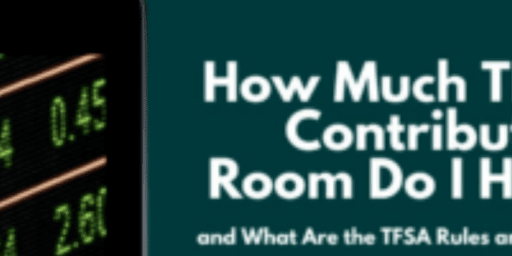Reader Question: Comparing MERs, Yield and Returns
A reader emailed me with a question about comparing ETFs, more specifically their MERS, yields, and if there is a correlating return.
Here is the question in detail:
I have a question regarding ETFs that follow indexes, like the XCV and XIC in Canada that follow the TSX in one way or another. There seems to be a lot of emphasis placed on selecting the ETF with the lowest MER but how does yield play into this?
So take for example, XIC has an MER of 0.25% and a yield of 2.20 %
While XCV has an MER of 0.52% but a yield of 3.19%, almost a full percent higher.
So based on this I would assume that holding XCV would yield 0.72% more each year.
Calculation:
(3.19-2.20)-(0.52-0.25) = 0.72
Am I missing something here? Or is XCV the clear cut winner? I understand that the two ETFs are made up of different stocks and weightings but without looking too much under the hood, is there any trade off between yield vs MER or is net yield as simple as the difference between the two?
Lets rewind a little bit and start off with the basics. MER stands for Management Expense Ratio, and it’s charged to the investor for holding the mutual fund or ETF. While it is a fee, the MER is taken directly from the performance of the security. As the reader mentioned, it is ideal to keep the MER as low as possible. As seen in my article on the best all in one ETFs, reducing your portfolio MER by 2% can result in a 60% portfolio balance difference after 30 years.
The yield on an ETF, stock, or mutual fund is a ratio of the distribution over the price of the security. For example, Royal Bank is a popular dividend stock that currently pays a 3.4% dividend yield. Looking under the hood, this yield comes from the bank distributing $2 per share on a $58.68 market price (May 6, 2011 close).
Getting back to the question, XIC is a TSX Index Capped Fund ETF with a MER of 0.25% and a current yield of 2.58%. XCV, is a Dow Jones Select Value Index Fund ETF with a MER of 0.52% and a yield of 3.22%. The reader mentions that it appears that XCV is the clear winner due to the higher yield, but in fact, it’s not that simple.
The fact is that both ETFs have some similarities but have different styles so it’s like comparing Macintosh apples to Royal Gala apples. The securities that each ETF holds along with position sizes will differ. The similarities are due to the Canadian market being small, but XIC simply tracks the index, while XCV picks stocks that appear cheap. The difference in yield simply depends on the distribution of the underlying securities.
If we take a look at XIC, we’ll see the following top positions:
| ROYAL BANK OF CANADA | 5.31% |
| TORONTO-DOMINION BANK | 4.60% |
| SUNCOR ENERGY INC. | 4.01% |
| BANK OF NOVA SCOTIA | 3.92% |
| CANADIAN NATURAL RESOURCES LTD. | 2.93% |
| BARRICK GOLD CORP. | 2.88% |
| POTASH CORP. OF SASKATCHEWAN INC. | 2.81% |
| GOLDCORP INC. | 2.40% |
| BANK OF MONTREAL | 2.18% |
| CANADIAN NATIONAL RAILWAY CO. | 2.17% |
XCV holds mostly:
| TORONTO-DOMINION BANK | 9.88% |
| ROYAL BANK OF CANADA | 9.87% |
| BANK OF NOVA SCOTIA | 8.85% |
| BANK OF MONTREAL | 5.13% |
| CANADIAN IMPERIAL BANK OF COMMERCE | 4.75% |
| TRANSCANADA CORP. | 4.32% |
| BCE INC. | 4.12% |
| CENOVUS ENERGY INC. | 3.87% |
| TECK RESOURCES LTD. | 3.49% |
| BROOKFIELD ASSET MANAGEMENT INC. ( | 2.68% |
If you know a bit about Canadian dividend stocks, you’ll notice that XCV holds stocks that pay higher dividends than XIC, thus the reason that XCV has a higher dividend than XIC. Investors typically use yield as a metric for buying when they are searching for income, but it’s not correlated to overall performance when comparing ETFs. In other words, an ETF or mutual fund with the highest yield may not outperform one with a lower yield.
Instead of over analyzing each ETF, it may be best to simply index your portfolio with low cost ETF’s or mutual funds and re-balance with new money. Here is an example of a low cost ETF portfolio.










The question is clear the answer unclear infact jt isnt even answered ..
How do you factor in the MER in a purely factual/mathematical way ?
The reader said : Yield – mer … does it make sense or not ? Ok the yield may change but still ..
SavingMentor, I’m with you. I’m a fan of XIU for exactly the same reasons.
The way I see it, fees are forever.
While yield is very important, it is highly subject to change.
Personally, I would hold XIU before XIC before XCV.
If only it was as simple as picking the stocks or ETFs that offered the highest yield. It’s so tempting to go after those stocks with a high yield!
So far I’ve pretty much stuck with XIU because it has the lowest MER and highest liquidity of the iShares Canadian ETFs. I held XIC for a bit, but decided to dump it after it underperformed and was costing me me in MER.
Another answer is that dividend yield is only one form of stock return out of three. The other two are share buybacks that increase EPS by reducing the number of shares outstanding, and investments to increase future earnings. Total return is, for the most part, what is important. Focusing on dividends alone is a mistake.
It’s further complicated when you include compound growth of re-invested dividends. I’d have to say that there are more variables at play than the MER and the yield to highlight a winner.
In the example mentioned, I don’t think there is a clear winner. If you want to be technical, the MER is a hidden cost included in the price you pay for the shares, therefore, the highest yield would provide the highest INCOME but not necessarily the best PERFORMANCE.
I feel the question was not really answered. The main problem is that past yield is not a good predictor of future yield so that the high yield stocks might be more volatile and have more chance of losing value. That is in fact probably why they currently have a low price. Investors feel that they carry more risk. Going for Low MER is a garanteed saving while going for high yield is a little more risky.